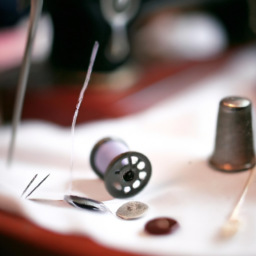
History of Sewing

Sewing, one of the oldest textile arts, has a fascinating history that dates back thousands of years. The art of creating items by stitching various materials together using a needle and thread has played a significant role in human civilization.
The earliest evidence of sewing dates back to the Paleolithic era, with the discovery of bone needles and thread made from animal sinew. These basic tools allowed our ancestors to sew hides together for clothing, shelter, and other essential needs.
As civilizations advanced, so did sewing techniques. In ancient Egypt, sewing was not only used for practical purposes but also became an important form of artistic expression. Elaborate embroidery, appliqué, and embellishments were added to garments to signify social status and tell stories.
During the Middle Ages in Europe, skilled seamstresses were highly regarded, and intricate needlework was used to adorn clothing for nobles and clergy. Sewing guilds and workshops were established, keeping the craft alive and passing down techniques from generation to generation.
The invention of the sewing machine in the 19th century revolutionized the industry, allowing mass production of clothing and textiles. This technological advancement brought sewing into households and spurred the growth of the fashion industry.
Today, sewing continues to be a popular hobby, creative outlet, and a vital skill. It offers endless possibilities for personal expression, from creating clothing to home decor and crafts.
Whether you’re an experienced seamstress or just starting to learn, exploring the history of sewing can deepen your appreciation for this ancient art form while inspiring your own creations.
Sources:




